With their bushy nose appendages and charming personalities, bristlenose plecos have made quite a big splash (ha!) in the aquarium hobby. The distinctive “bristles” around their mouths gives them a distinctive appearance, but these fish are more than just their looks. In reality, bristlenose plecos are prized for being hardy, practical fish that also lend character to a tank.
This article provides an in-depth overview of the bristlenose plecos and sheds some insight on how you could care for them. We’ll discuss everything from their nutritional needs to the kind of habitat and tankmates they prefer. By the end of this article, you’ll turn into an expert on everything related to this species!
Characteristics/Appearance/LifeSpan
Common Name (species)
Bristlenose Plecos, Bushy Nose Catfish, Ancistrus cirrhosus
Family
Loricariidae
Origin
Central and South America
Diet
Herbivorous
Care Level
Easy
Lifespan
5-10 years
Activity
Sociable
Temperament
Peaceful
Tank Level
Bottom Dwellers
Minimum Tank Size
40 gallon
Temperature Range
73 to 81 degrees Fahrenheit
Water Hardness
2-30 dG
pH Range
5.8 – 7.8
Filtration/Flow Rate
Prefers well-filtered and very clean water
Breeding
Egg layer
Compatibility
Gets along with most other community fish
OK, for Planted Tanks?
Yes – they will only eat algae growing on plants, not the plants themselves
Activity Level/Temperament
Like most bottom-feeders, bristlenose plecos are… relaxed, to say the least. These fish spend all of their time attached to either a tank wall, or the bottom of the tank. Their goal? To graze on as much algae film as they can get their mouths on. Think of these fish as the languid grazers of the underwater world. If you’ve ever seen a cow munch contentedly on grass all day long, you’ll have an idea of what to expect.
This relaxed temperament and slow-moving nature translates into a fish that keeps to itself for the most part, and is pretty happy doing so. They definitely enjoy having other fish around, but they’re not one to initiate interactions. Instead, they prefer hanging out casually, with each fish doing their own thing. Sounds like an introvert’s idea of a good time!
Compatibility/Mates
Because bristlenose plecos are such peaceful fish, they make perfect candidates for community tanks. In fact, many enthusiasts keep them in tanks with species such as clown loaches and neon tetras. Most docile fish would work, as long as they enjoy the same water parameters as bristlenose plecos. In particular, every prospective tank mate needs to enjoy living in an environment with fast-flowing waters.
This is actually a taller order than one would expect. Many freshwater fish prefer gentler current, and are not equipped to handle the rapid currents that bristlenose plecos prefer. Fish with long, flowing fins, or those with larger, flatter body shapes tend not to do well in fast-flowing water. The stress would chip away at their immune systems, making them susceptible to a variety of different illnesses.
The bottom line? Despite the fact that bristlenose plecos are hardy fish with easy-going natures, you need to pick your tankmates wisely. Aggressive fish are obvious no-gos, as are fish that do not do well with strong filtration. Also, make sure to pick fish that enjoy warmer temperatures. Bristlenose plecos are accustomed to tropical climates, so their tankmates should share their preferences.
Feeding
What to feed
Bristlenose plecos are herbivores, which in the context of bottom-feeding fish means that they are almost exclusively algae eaters. In the wild, it is not uncommon for bristlenose plecos to meet most of their nutritional needs from natural algae. However, home aquariums rarely have enough algae to meet their needs. Simply put, most fishkeepers do not want to deal with excessive algae growth in their tanks.
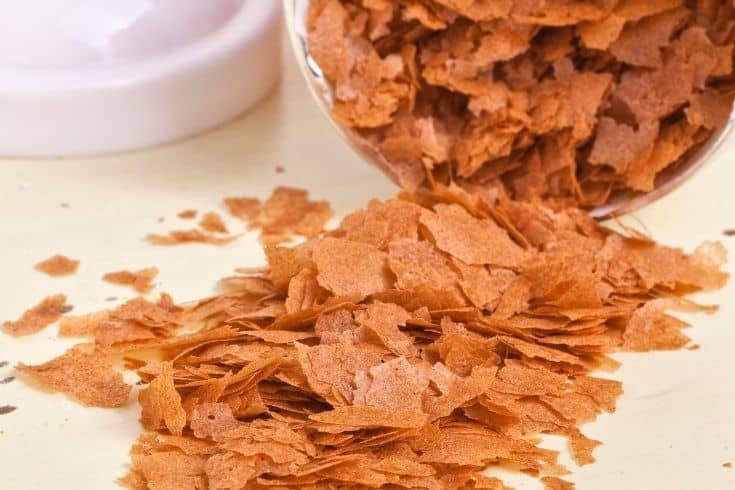
So, what should we feed these fish instead? Well, algae wafers, for one. These are the commercially-produced answer to the pleco’s need for algae. They offer a nutritionally-complete, balanced diet for your fish. You can also opt for fish food pellets formulated for herbivores. Just be sure to get these from a reputable manufacturer, as you want to be sure that they’re made with good-quality plant matter.
Many fishkeepers also opt to feed fresh vegetables to their bristlenose plecos. We think veggies make a great occasional treat, but don’t think they should make up the bulk of your bristlenose pleco’s diet. These are algae eaters at the core, and should be fed as such. Should you decide to experiment with feeding vegetables, we recommend trying blanched lettuce, raw zucchini slices, and peas with the skin removed.
Frequency
Your feeding frequency depends on how much algae your plecos get from the tank. If your tank has sufficient algae, then it’s likely that one supplemental feeding round per day would do the trick. On the other hand, if your tank is virtually pristine and algae-free, then you’d need to switch things up. 2-3 small feedings per day ought to do the trick.
It is important to note that most fishkeepers underestimate the amount of algae bristlenose plecos need to survive. If you’re unsure as to whether or not your tank has enough algae, then we suggest erring on the side of caution and providing supplemental feedings more frequently. As long as you remove any uneaten food from the tank, this shouldn’t cause any issues.
What Not To Feed
As bristlenose plecos are herbivores, we recommend avoiding any animal-based foods such as shrimp, bloodworms, etc. These types of food can cause serious digestive issues for bristlenose plecos, and may even lead to death. You should also avoid pellets that are formulated for omnivorous fish.
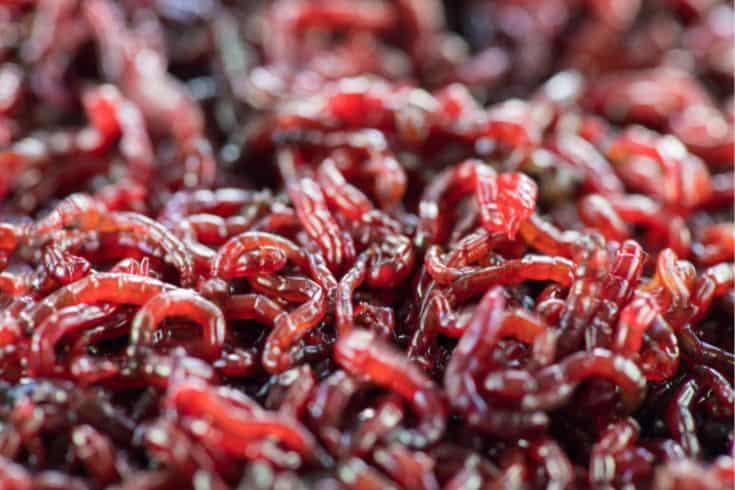
Given that the vast majority of fish in the hobby are omnivorous, the majority of pellets on the market are formulated for them. As such, these pellets contain too much protein for a herbivore like the bristlenose pleco. Stick to pellets specifically formulated for herbivorous fish, or opt for a more natural diet of algae and vegetables.
Tank Requirements
Tank Size
As adult fish, most bristlenose plecos stop growing when they hit the 5-inch mark. This isn’t shabby by any means, but it does place bristlenose plecos squarely in the “average” camp when it comes to size. But why did we mention needing to prepare a 40-gallon tank for these fish? As you’ll see, the answer is nuanced and manifold.
First and foremost, plecos need plenty of space to move around and explore while in the tank. Even though they won’t get too large, they still require adequate space to express their natural behaviors. To this end, a 40-gallon tank is the minimum size that should be used for a bristlenose pleco.
Also, consider the other fish that might be inhabiting the tank. If you plan on keeping other fish with your pleco, then a larger tank size might be necessary to provide adequate living space for all of its inhabitants. This is especially true if you plan on keeping other large fish, such as cichlids, in the same tank. Your tank needs to be able to handle the bioload of a thriving community of fish.
Tank Set-up
You will need the following:
- A 40-gallon tank
- Good quality aquarium gravel
- Aquarium plants that are easy to care for
- A few hiding places (caves or driftwood)
- Aquarium heater and thermometer to maintain temperature
- Air pump for oxygenation
- Water conditioner
- Neutral pH water –
- Testing kit to keep the ammonia, nitrite and nitrate levels in check
- An appropriately sized filter
- First, rinse the gravel with tap water to remove any debris or dust. Place enough on the bottom of your tank so it’s at least 2-3 inches deep.
- Next, start to assemble the décor you’ve purchased and add your plants. Place a few hiding places such as rocks or tunnels in the tank and make sure they’re firmly secured so they don’t come crashing down
- Install an appropriately sized filter in your tank. Make sure to test it before adding any fish. You should leave it on during the tank cycling process (which takes up to 8 weeks) as well.
- Use an aquarium heater to maintain the temperature between 23-28°C (74-82°F). Attach a thermometer near it and check in at least twice daily for any fluctuations, as this fish require stable temperatures
- Lastly, add your water conditioner before filling up the tank with tap water. You’ll also need a testing kit to keep an eye on the ammonia, nitrate and nitrite levels throughout their initial tank set-up period as well.
- Once everything is ready, you can now add your Bristlenose plecos! Make sure to observe them carefully, particularly during the first few days and acclimate them gently to the new environment.
And there you have it! You’ve now created a happy little home for your bristlenose plecos!
Habitat Requirements
Water Requirements
Bristlenose plecos hail from the fast-flowing rivers of south and central America, which means that they to kept in well-oxygenated water. You can use water pumps or air stones to aerate your tank, or you can simply opt to add lots of live plants. Either way, you want to make sure these fish are kept in a freshwater tank that’s properly aerated.
Once you’ve met their need for fresh, clean water, bristlenose plecos are actually pretty easy to please. They’re at home in a variety of tank conditions, and are happy to tolerate a wide range of pH and hardness levels. For first-time fishkeepers, this is a huge relief, because it means that these fish will tolerate the occasional fluctuation.
Of course, you should still strive to keep their water parameters as stable and close to ideal as possible. These fish should be rewarded for their resilience and not have their hardy natures pushed to the limits! You can maintain a comfortable environment by doing a 20-30 percent water change on a weekly basis. Test your water to ensure that ammonia, nitrate, pH, and hardness levels are well within range.
Filtration Requirements
Generally speaking, bristlenose plecos do pretty well in a wide variety of conditions. However, you should still strive to provide them with a clean habitat. That’s where a good, reliable filter comes into play. We personally prefer canister filters as they provide a lot of power and flexibility when creating the ideal environment. Hang-on-back filters are also great options if you’re working with limited space.
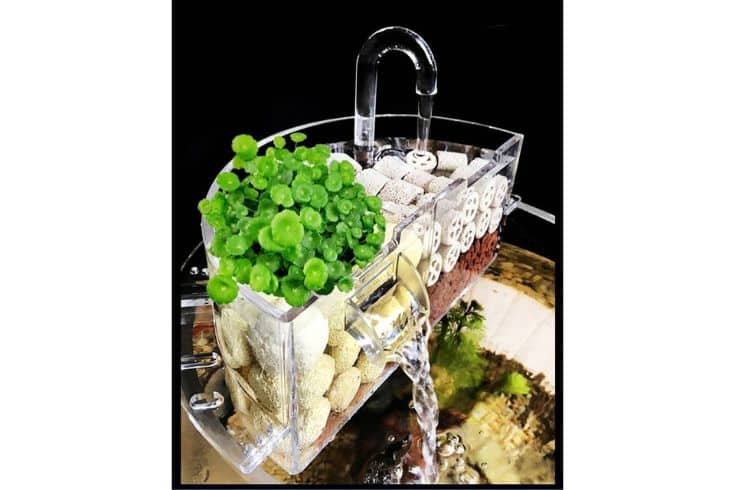
No matter what filter you choose, make sure it is the right size for your tank (power filters should be at least three to five times larger than what’s specified in the product manual). Additionally, keep an eye on how often or frequently you clean or replace filter media. There’s absolutely no point in keeping a filter if it’s clogged or not doing its job properly!
Finally, it may be worth mentioning that this is one of very few fish that will enjoy a filter with a strong output current. This helps to replicate their natural environment which is much more turbulent than many other aquarium fish enjoy. Ultimately, this means that you can opt for a filter with a higher flow rate. Of course, you should still make sure you won’t be putting too much stress on your pet.
Heat and Lighting Requirements
Bristlenose plecos prefer water temperatures in the 73-81°F range, so a heater is recommended. Heaters don’t just heat the water up – they also ensure the water temp remains relatively stable. Even if your tank is kept in a temperature-controlled home, a heater will serve as an insurance policy, safeguarding your fish against any inexplicable fluctuations.
In terms of lighting, bristlenose plecos are not fussy in the slightest. These are bottom dwellers, so dim little corners are where they feel most at home. To that end, you should try to avoid lighting that’s too intense and avoid placing the tank in direct sunlight.
Plants and Decorations
Bristlenose plecos are bottom-feeders, so they should be kept in a bare-bottom tank, right? Wrong! As we’ve previously mentioned, these fish require plenty of oxygen – enough to replicate what one would find in their natural habitats. And what’s the best way to maintain a high oxygen level? Plenty of plants! Aquatic plants such as anubias are a great way to oxygenate your tank, while providing a pop of green.
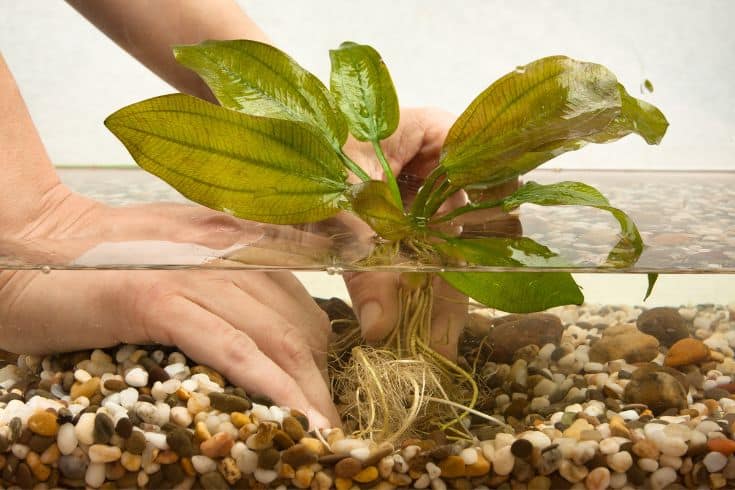
Although fake plants also accomplish the same aesthetic effect, it has the obvious drawback of not providing any oxygen to the tank. That being said, they’re still a viable tank decor option. Opt for silk plants, as they won’t affect the water chemistry and are gentler on your fish’s body. They can be used to create plenty of hiding spots without any of the hassle associated with plant upkeep.
Other forms of tank decorations can also be used to create the ample hiding spots that bristlenose plecos enjoy. For instance, you can opt to anchor a well-sanded piece of driftwood in some natural substrate, creating tons of organic nooks and crannies. You can also create some cave walls out of rocks. Decorative elements made of tank-safe materials can also be a great way to get creative.
Common Health Issues in Bristlenose Plecos
Health Issue
Ich (White Spot Disease)
Symptoms or Causes
Ich is a very common disease that’s caused by an aquatic protozoan parasite.
Fish infected with Ich develop a sprinkling of tiny white spots on their fins, gill covers, and bodies. They also flash against the gravel and other solid objects in the aquarium.
Suggested Action
Raise the water temperature to 82o F for three days. Use an OTC White Spot Disease medication to treat the tank.
Health Issue
Flukes
Symptoms or Causes
Flukes is the term used to describe various types of external fish parasites. These macroparasites can often be seen with the naked eye attached to the fish’s skin or gills.
Suggested Action
Treat the fish tank with an OTC antiparasitic medication.
Health Issue
Fungal infections
Symptoms or Causes
White fluffy growths on the fish’s body, mouth, and head.
Suggested Action
Quarantine infected fish, and treat with an antifungal medication.
Health Issue
Bacterial infections
Symptoms or Causes
Sores and ulcers on the body and head, ragged, bloody fins.
Suggested Action
Treat the tank with OTC antibacterial treatment.
Breeding
Bristlenose plecos have a relatively simple breeding process. You simply need to provide a few caves, such as caves made of terra cotta pots, in which the females can lay their eggs. Your fish will then take care of the rest. Here’s a quick overview of how the process works.
1. Your male pleco will fan and clean the area around a chosen cave, which is usually done to provide an ideal spot for egg-laying.
2. The female bristlenose inspects the cave and deposits her eggs if it is up to her standards.
3. The male pleco will then move in and fertilize the eggs by releasing his milt onto the eggs.
4. The male then guards the eggs until they hatch around 10 days later. The fry aren’t free-swimming at this stage. They will cling to the cave walls and absorb their yolk sacs before they can start to swim on their own.
5. Daddy bristlenose pleco will keep guarding the fry until they become independent. Once they’re able to swim on their own, he will leave them to fend for themselves.
As a responsible hobbyist, it then becomes your responsibility to feed the fry and make sure they are getting adequate nutrition. You can opt for spirulina powder, small pellets, and even liquid fry foods when they are large enough.
Product Recommendations
Best food: Tetra PRO Pleco Wafers
Best filter: MarineLand Penguin Power Filter
Best water conditioner: API Stress Coat
Conclusion
We hope this article gave you a better idea of what the ubiquitous bristlenose plecos are all about! There’s no doubt that these are interesting, fun little guys to have around. If you have the means to take good care of them, we highly recommend getting a couple for your tank. Trust us – these practical yet interesting fish will entertain you for hours on end!
Did you find this article helpful? If you did, please consider sharing it with a fellow fish enthusiast! Your support keeps us motivated and inspired, so we really appreciate your support! Thanks for reading, and, as always, happy fishkeeping!
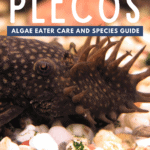

Excellent article, please keep them up